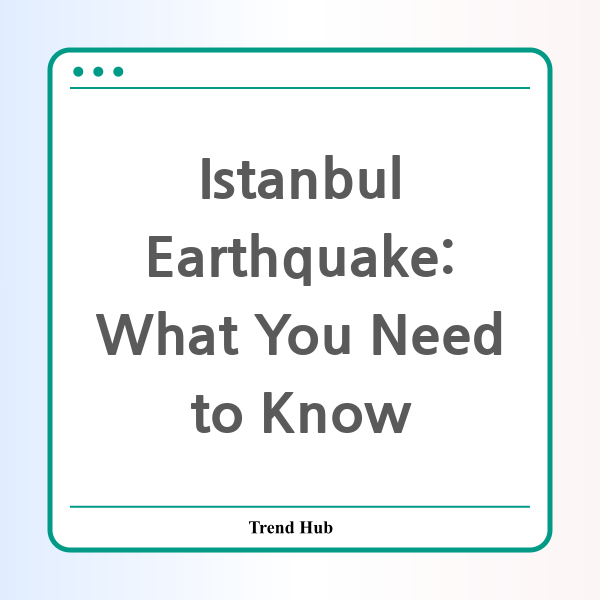* This website participates in the Amazon Affiliate Program and earns from qualifying purchases.

Shaken but Not Broken: Istanbul Faces a Strong Earthquake
An earthquake measuring 6.2 on the Richter scale struck Istanbul, Turkey on Wednesday, sending shockwaves through the city and its residents. Thankfully, the disaster agency reported no serious damage or major injuries, even though panic ensued as people rushed out of buildings in fear.
The quake occurred at 12:49 p.m., rattling the streets during a public holiday, a time when many families were out celebrating. Such timing added to the chaos as children and parents scrambled for safety, with some resorting to jumping from windows while trying to escape.
According to official sources, the epicenter of this earthquake was located about 25 miles southwest of Istanbul in the Sea of Marmara and the tremor had a shallow depth of approximately 6 miles. Despite the intensity of the initial quake, reports indicate that no buildings collapsed. However, the Istanbul governor confirmed that dozens were injured as they attempted to flee, mostly from jumping heights out of fear.
In the wake of the quake, many residents sought refuge in parks and open spaces, choosing to avoid buildings that could potentially collapse during aftershocks. Reports of aftershocks have confirmed substantial activity, with 51 aftershocks recorded by 3:12 p.m., the strongest measuring 5.9 in magnitude.
Emergency Response and Public Safety
Officials in Istanbul acted quickly to assess the situation and provide reassurance. Interior Minister Ali Yerlikaya stated that while there were no reports of significant structural damage from the earthquake, authorities were responding to localized reports of damage. Emergency services were mobilized to assist those who had sustained injuries while attempting to escape buildings.
Mayor Mehmet Ergun Turan of Istanbul’s Fatih district reported no major structural issues while acknowledging that the density of the area poses a potential risk for buildings that could be vulnerable during seismic events. Residents were advised to remain alert and prepared for possible aftershocks, reinforcing the need for earthquake preparedness protocols in such a seismically active region.
Turkey sits on two major fault lines and is known for its seismic activity, a fact that many residents bear in mind. The nation has experienced devastating earthquakes in the past, including a 7.8 magnitude quake that resulted in widespread destruction and loss of life. Awareness of this geological reality has heightened the focus on building safety and emergency response in urban environments.
Preparedness is Key
As Istanbul recovers from this recent tremor, it serves as a poignant reminder of the importance of earthquake preparedness. Residents are encouraged to review their home safety plans and familiarize themselves with local emergency response resources. It is vital for individuals to know how to react in the event of seismic activity:
- Stay calm and assess your surroundings.
- Drop to your hands and knees to prevent being knocked over.
- Take cover under sturdy furniture if available.
- Hold on until the shaking stops and be ready for aftershocks.
In times of crisis, community preparedness and response can make a significant difference. Authorities are continuing to monitor conditions, and public guidance is essential to ensure the safety of all residents.
Conclusion
The recent earthquake in Istanbul has raised awareness about the seismic risks that Turkey faces and highlights the need for community vigilance and preparedness. By being informed and prepared, residents can safeguard themselves and their loved ones against future seismic events. May the people of Istanbul remain safe and resilient as they navigate the aftermath of this significant earthquake.
* This website participates in the Amazon Affiliate Program and earns from qualifying purchases.